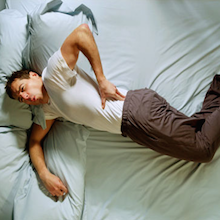Humans have evolved from hunting and gathering our food, each playing a very physical part in collective survival, to manning computers and acquiring our food in the line at the grocery or local convenience store. As we have adapted and progressed technologically, our body composition has adapted and digressed in response to our daily routines, behaviors, and to our new means of survival.
However, the aging progress along with the rates of deterioration or restoration of muscles has not changed. This is bad news and good news. In one sense, we have the ability and adaptability to become stronger, faster, more efficient, and more functional. The bad news is that no matter how many aisles in the grocery store we spend walking through, our strength and ability to move in dynamic, controlled, and smooth ways has depleted. This is especially prevalent in first world countries where access to essential needs is not a daily stress.
One of the groups of muscles that have been most impacted in this transition to the inactive lifestyles is the muscles of the “poster chain.” This means that your gluteal muscles and hamstrings are working on underdrive. If you sit at a desk, your knees are bent and your posterior chain muscles are “off.” This means they aren’t firing or putting in the work needed to thrive. This lack of use and prolonged sitting culture causes our muscles to get tight, weak, and ineffective.
As we age the effects of these prolonged postures are even more significant as our bodies begin to decrease their collagen content, their ability to turn over into new healthy cells, and their rate of adaptability to change and stress. Even by the end of a 30-minute sitting session writing this post, my first few steps will not feel freely mobile and flexible.
Over time these desk jobs and quick trips to the grocery store followed by a couple of hours of television have led to monstrous disability in society. Obesity and heart disease is a whole new story for a whole other day but there are other effects that can be equally as detrimental in the long run.
Although we do not need “posterior chain” to be as strong and stable as we would need if we were hunting and gathering food, we still require these muscles to be strong, stable and have enough stamina to walk, sit up from a chain, navigate the stairs, and negotiate the unpredictable surfaces in the community.
When these muscles are weak, it results in poor balance, or at least compensations to maintain balance. These compensations can provide stresses our bodies are not designed to handle. Decreased balance can lead to aches, pains, weakness, and ultimately a fall that affects younger and older people alike. One of the more discussed and debilitating musculoskeletal injuries in the medical community is a hip fracture can often as a result of a fall. In the usual elderly patient, the 1-year mortality rates following a hip fracture are 14-58%. That may not seem like a log but nearly 917/100,000 people in the United States are fracturing their hip each year. These falls and fractures are more prevalent as humans are both living longer AND growing more sedentary.
Luckily, we don’t have to fight or hunt for food, but there are things we can be doing on a weekly basis to strengthen those muscles we are neglecting, most notably the posterior chain muscles. This includes the glute muscles and the back of the leg muscles. If you notice that you are starting to feel imbalanced, see a physical therapist! This is certainly an issue that we are all trained to address. If you do not have balance issues, strengthen your posterior chain like your life depends on it because one day it could save you from a preventable fall, and even save your life.



